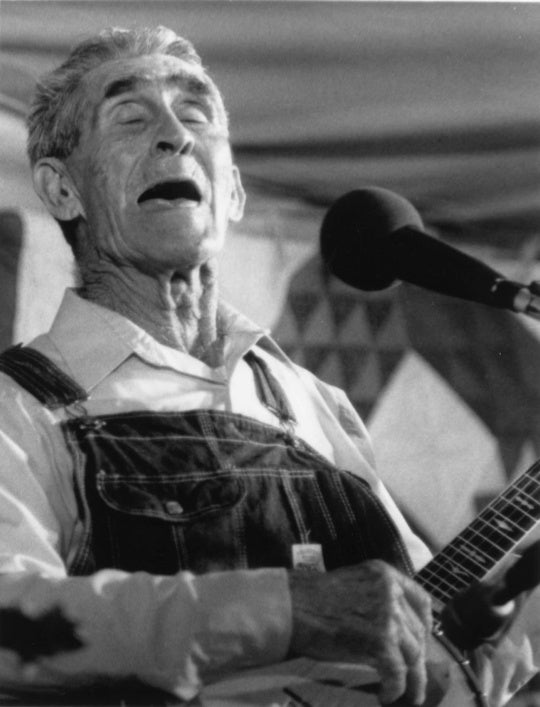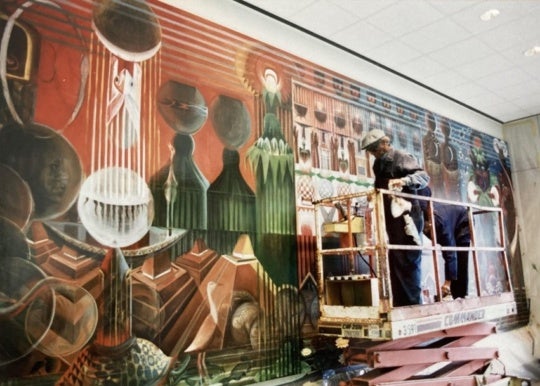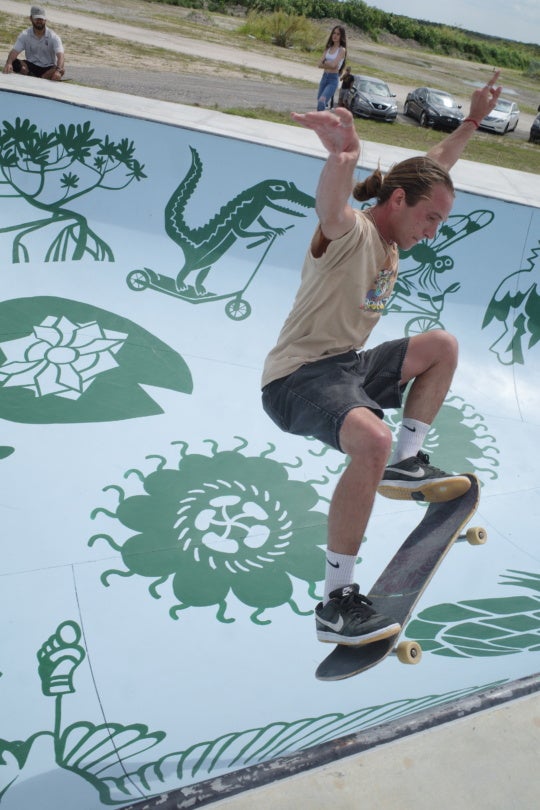
Space. Cheryl Goldsleger’s work depicts space—landscape developed and inhabited. Her artist statement opens with a quote from Bachelard’s “Poetics of Space” and a rumination on how “the spaces we know and inhabit” affect us as much as we as a society impact them. Goldsleger’s graphite drawings both evoke and recognizably depict — without abandoning methods of abstraction — space and structures through layers of overlapping and intersecting lines.
The show, titled “The Poetics of Space and Systems,” consists of 10 works in graphite on Dura-lar and three mixed-media on linen by the Athens-based artist. The works appear monochromatic, white lines on dark, graphite backgrounds, like film negatives or the view of earth’s city lights from a satellite. Her palette and process of mark-making (similar to Julie Mehretu’s) unify the series, but no two pieces are alike.

Goldsleger’s process is inscrutable—perhaps both additive and reductive—but it is undoubtedly paramount to her aesthetic. Regardless of whether her mark-making is done by subtracting and erasing material or by building it up, her method is probably less precise than you’d guess at first glance. From a distance, the works look measured, like black and white renditions of urban grids and typographic maps. Up close, subtle, underlying washes of diluted color are visible. Particles in the graphite build up in blotches that almost glitter. The pieces appear clean and precise, lines and arches drawn with protractors and straight edges, but up close one can see drips, patterns, and rippled edges—the trace of the artist’s hand.
Just as her lines are both organic and mathematical, so too is the work’s conceptual essence. Goldsleger’s pieces resemble topographical maps, blueprints, city grids, and Doppler radar imaging in works like Open, Barriers, and Taken (all works 2015, unless otherwise noted). In pieces like Association, Unsettled, and Indeterminate (2016), they suggest constellation charts and planetary maps within the solar system. But in a work like Impartial, theycould also be closeups of a computer’s motherboard.

Whether they trace urban development or mimic the intricacies of technology, the works capture an image of the existence, growth, and impact of human civilization. Societies build networks, structures, and technology in systematic and highly strategic ways, but also organically, as the result of human needs, desires, pursuits, tensions, and barriers.
Goldsleger exposes the nature of the spaces humans inhabit to reveal society’s “collective thought and organization,” as well as the invisible history of those landscapes. Though they resemble maps, her works don’t include keys, scales, labels or landmarks. Titles like Readjustment, Osculate (2016), Navigation, and Unsettled relate to placement, barriers, and movement—which again, denote human presence. The intrigue lies within the nuances of imperfections you can only see close up, just as the built environments of civilization are the product of imperfect human design.

The multilayered planes of Goldsleger’s drawings chronicle change within civilization and represent systems of an inhabited landscape. The interchangeably intuitive and intentional strokes that mark her process symbolically represent the ways in which human nature spans across, builds upon, and develops the places in which it thrives.
Cheryl Goldsleger’s exhibition is on view through October 22 at Sandler Hudson Gallery. It will appear at the Morris Museum of Art in Augusta later this year.
Jac Kuntz is an arts writer, editor, journalist, and artist living in Atlanta. She is a recent graduate of the Masters of Arts Journalism program at the School of the Art Institute of Chicago. She also holds a BA in Psychology and a BFA in Painting with a concentration in art history from Clemson University.




